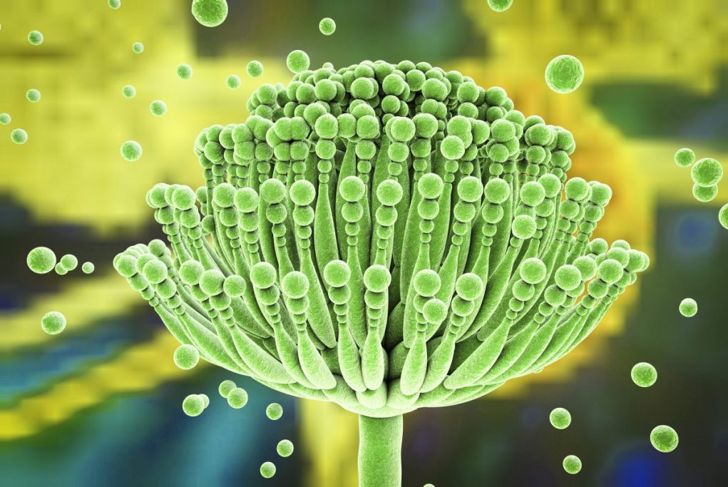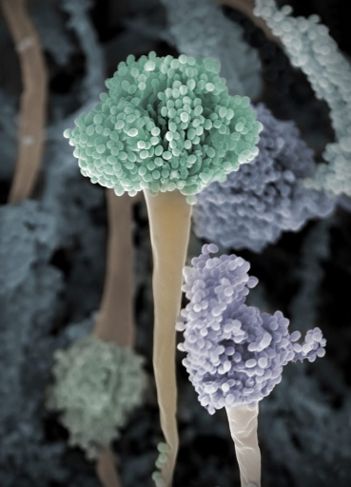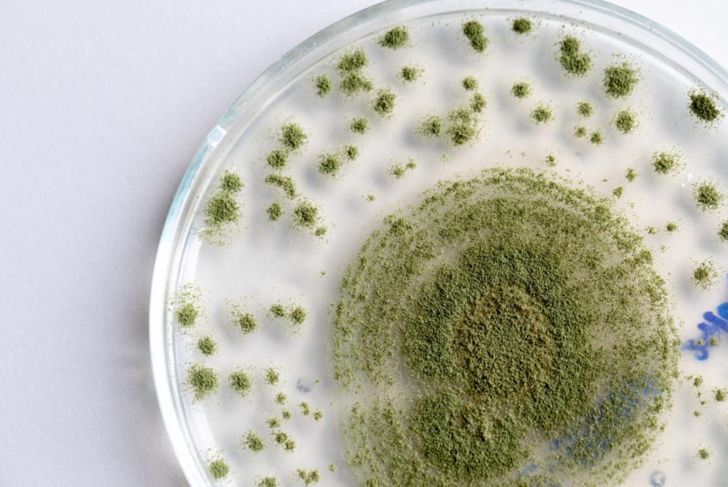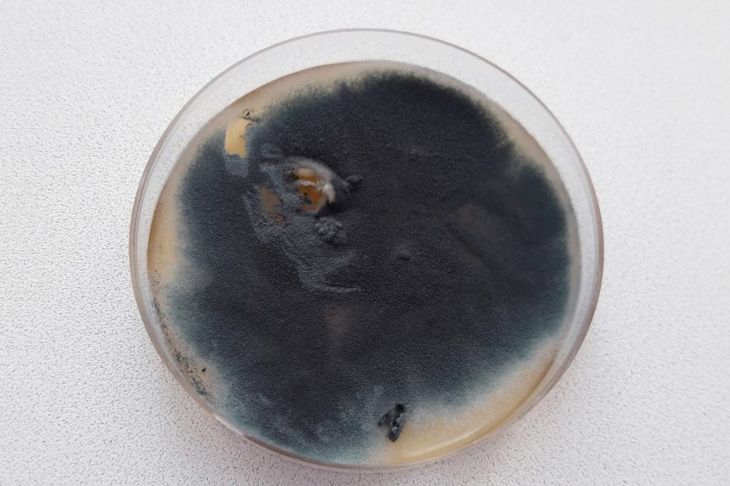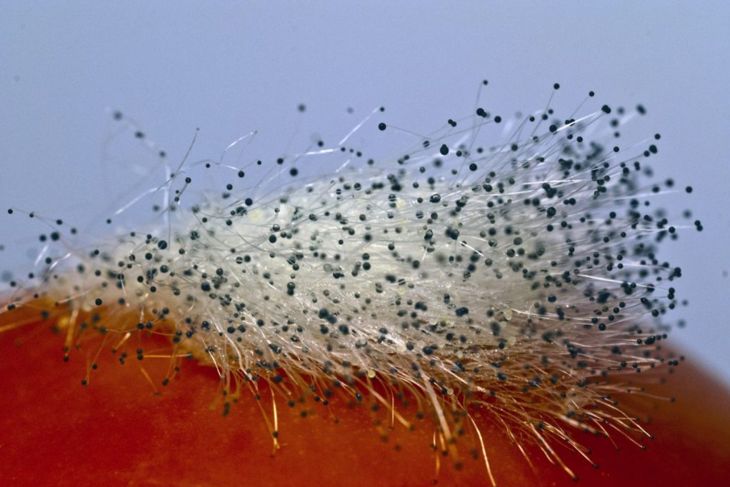The fungus Aspergillus causes aspergillosis. There are approximately 180 species of Aspergillus, but scientists have found only about 34 of them cause harm to humans and, in some cases, animals. The most prevalent harmful types are A. fumigatus and A. flavus. Aspergillus exists in soil, plants and decaying plant matter, dust, building materials, food, and water, which makes contact with the fungus very common.
Types of Aspergillosis
There are five main types of aspergillosis, and each can be placed into one of three categories: non-invasive, invasive, and chronic. Non-invasive aspergillosis includes allergic bronchopulminary aspergillosis, allergic aspergillosis sinusitis, and aspergilloma. These usually do not spread. Invasive aspergillosis includes the self-named type and cutaneous aspergillosis; doctors treat these varieties as serious infections. Chronic aspergillosis is a long-term fungal infection.
Non-invasive Aspergillosis
Non-invasive aspergillosis is the least harmful type. Allergic bronchopulminary aspergillosis causes a lung infection, while allergic aspergillosis sinusitis affects the sinuses. Aspergillosis develops as a ball of fungus in the lung or sinus but typically does not spread. Doctors do not consider these developments medically serious, although they can evolve into more severe types.
Invasive Aspergillosis
Invasive aspergillosis is a severe infection that most often affects the lungs, although it can spread to other parts of the body. Cutaneous aspergillosis is also dangerous; it enters through a break in the skin, but can also develop when invasive aspergillosis spreads.
Chronic Aspergillosis
Chronic aspergillosis is a long-term fungal infection. This type causes holes to form in the lungs due to the gradual loss of lung tissue. In addition, multiple balls of fungus may develop in the lungs.
Causes of Aspergillosis
Inhalation of a fungal spore is the direct cause of aspergillosis. Because fungus exists both indoors and outdoors in a variety of common places including food and water, it is logical to assume aspergillosis is widespread among the population. Fortunately, though, the condition is not contagious and is generally found only in those with already-compromised immune systems or lung disease.
Factors that Increase the Risk of Developing Aspergillosis
People who develop aspergillosis usually have a pre-existing condition that adversely affects their lungs or immune system, such as cystic fibrosis, asthma, tuberculosis, sarcoidosis (an inflammatory lung disease), or chronic obstructive pulmonary disease (COPD). In addition, people undergoing chemotherapy, organ transplants, or stem cell transplants are at increased risk, as are those with existing lung cavities or on high or long-term doses of corticosteroids.
Symptoms of Aspergillosis
Symptoms differ depending on the type of aspergillosis. In people with allergic bronchopulminary aspergillosis and allergic aspergillosis sinusitis, symptoms often appear as common allergies or sinus infections, and include coughing, wheezing, and shortness of breath. With aspergilloma, those same symptoms are often present, but can also include coughing up blood. People with chronic aspergillosis often experience weight loss and fatigue as well as the above symptoms. Invasive aspergillosis causes all of the above are symptoms, plus fever.
Diagnosing Aspergillosis
Doctors administer several tests to develop a diagnosis of aspergillosis, including lab and blood tests and chest x-rays. CT scans can evaluate the condition of the lungs and find cavities. The physician may also take fluid samples from the respiratory system and tissue biopsies of the lungs.
Treating Aspergillosis
Treatment for aspergillosis varies depending on the type although anti-fungal medications and corticosteroids are the usual first choice for all varieties. With invasive and chronic types, the doctor will likely decrease any immunosuppressive medications if possible. In the most severe cases, patients may require surgery. The only type that rarely requires treatment is aspergilloma, but a medical professional must monitor the condition regularly to ensure no adverse changes occur. If the condition does advance to the point of needing treatment, embolization to stop lung bleeding is a common procedure.
Preventing Aspergillosis
While it is impossible to prevent inhaling fungal spores completely, at-risk individuals can take steps to help decrease exposure. This is especially necessary for people with already-compromised immune systems. Preventive steps include protecting oneself from dust and building materials with a face mask, avoiding close contact with soil and plant matter, and using antifungal medications.

 Home
Home Health
Health Diet & Nutrition
Diet & Nutrition Living Well
Living Well More
More